Time pressure and record capital scale
Directive No. 02 of the Minister of Construction clearly stated that, by the end of August, the Ministry's budget disbursement had only reached nearly 37%, significantly lower than the national average (over 46%).
Talking to Tien Phong reporter, economic expert Ngo Tri Long said that the disbursement target of "at least 95%, striving for 100%" of the Ministry of Construction this year is not impossible, but very challenging if there is not a "point-point - quick - accurate" solution package starting this September, especially for key infrastructure projects.
According to Mr. Long, 2025 is a pivotal year with total public investment capital exceeding 1,000 billion VND (including local supplements and transferred capital), of which the initial plan assigned by the Prime Minister was nearly 826,000 billion VND; many localities have supplemented, bringing the total scale of the detailed plan to nearly 870,000 billion VND, and by early September the overall figure continued to increase.
As of August 31, the estimated disbursement reached more than VND 409,000 billion, equivalent to nearly 40% of the total plan and more than 46% of the plan assigned by the Prime Minister, higher than the same period in 2024, but the growth momentum has slowed down, creating great pressure for the last 4 months of the year.
For the Ministry of Construction, by the end of July, 28,500 billion VND (nearly 33%) had been disbursed, and by the end of August, the disbursement had reached nearly 37%. According to approximate calculations from these milestones, the scale of the Ministry of Construction's capital plan this year is about 86,000 - 87,000 billion VND. Thus, to reach the 95% milestone, the Ministry must disburse an additional nearly 50,000 - 52,000 billion VND in 4 months, or 12,000 - 13,000 billion VND/month - 2.5 to 3 times the average pace of the first 8 months of the year. This intensity can only be achieved if capital and effort are concentrated on "explosive points" with clean premises - designs, estimates, and contracts ready for construction.
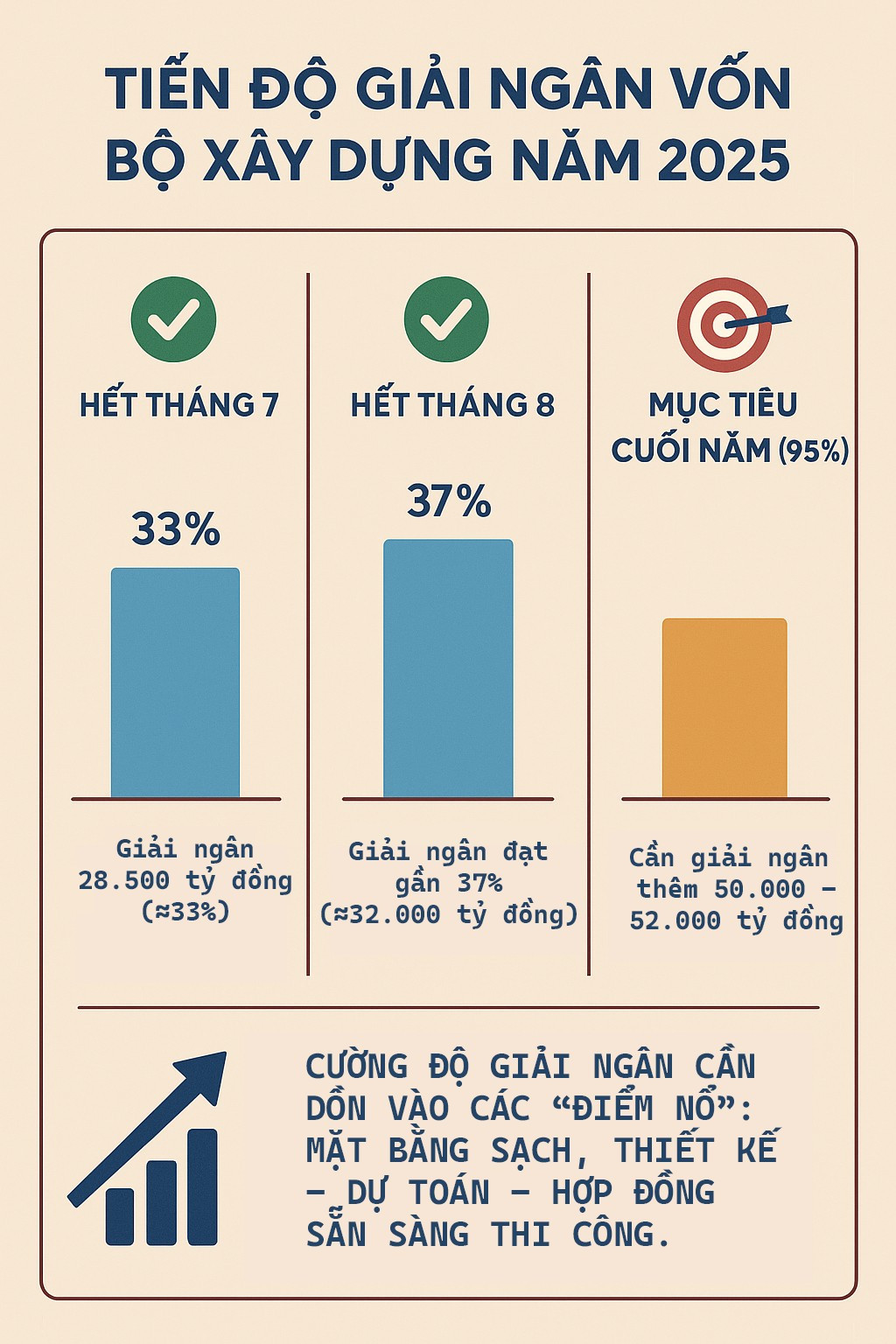
Fulcrum or bottleneck?
According to economic expert Ngo Tri Long, beltway projects, the North-South Expressway, airports, seaports and urban railways are currently attracting capital and have great influence. But the level of readiness is different.
As for the Ho Chi Minh City Ring Road 3 project alone, by the end of August this year, only nearly 46% of the plan had been disbursed; the central budget capital reached 87%, while local capital was only about 24% - showing "two speeds" in the same inter-regional project. To achieve the goal of opening each section to traffic in 2025 - 2026, it is necessary to have a clean site, a stable source of materials and a flexible capital - advance mechanism for key packages.
Regarding the target of 3,000 km of highways in 2025, although the Prime Minister repeatedly requested to accelerate and break through, not to extend key projects scheduled to be completed in 2025. However, the construction volume in the past 3 months in some packages only increased by 1.3-4%/month - a warning signal that it is necessary to "concentrate troops" and coordinate materials and machinery in September.
Regarding Long Thanh International Airport, just considering the flight management items, the construction part must be completed in September, with equipment installation following the next plan - the progress is "tense" and depends heavily on the supply chain - acceptance of specialized equipment.
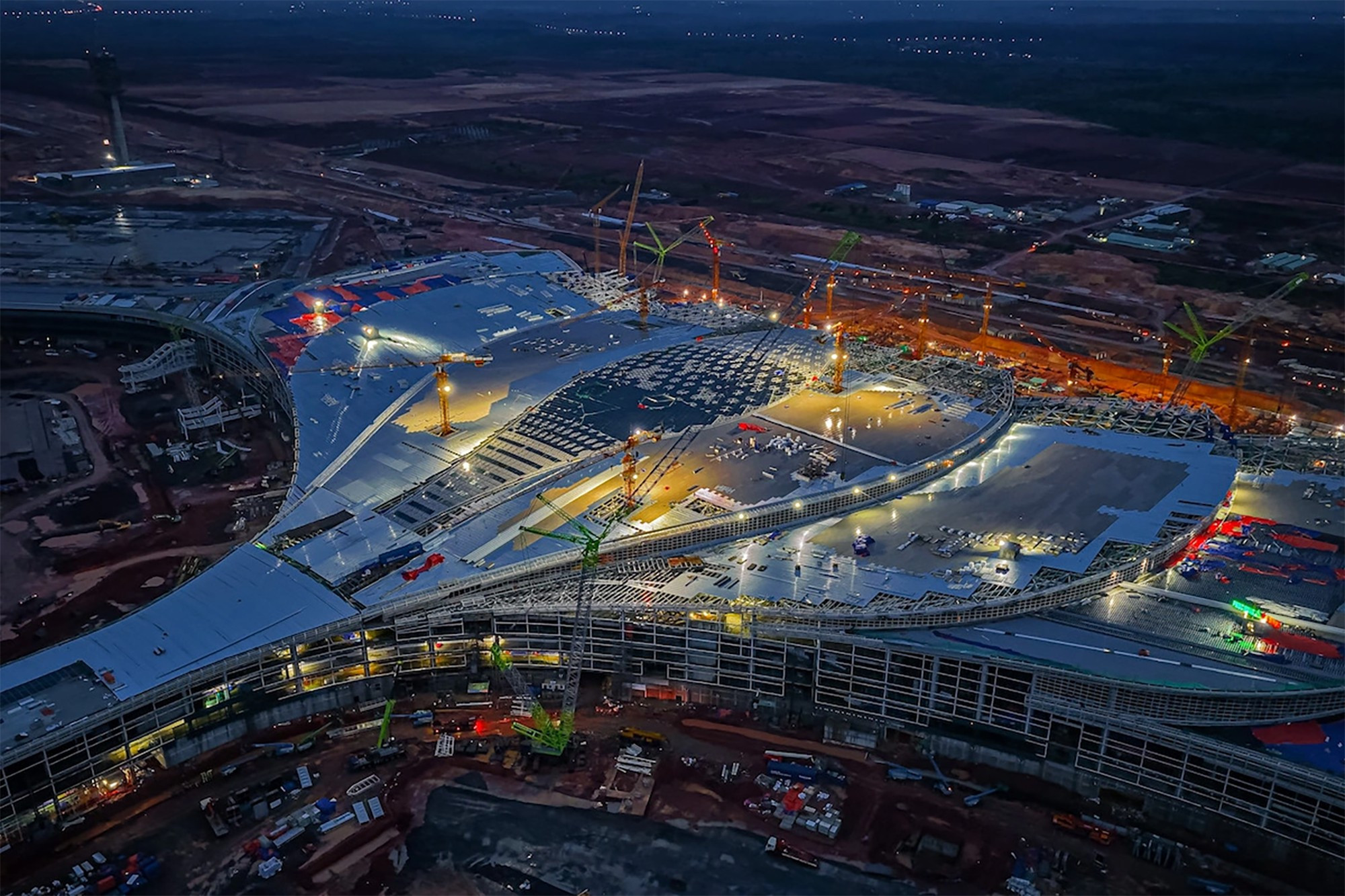
The Ministry of Construction's public investment disbursement does not take place in a vacuum but is in line with the inter-regional project axis. The "fulcrum" to accelerate in the fourth quarter lies in packages with ready site plans - designs - contracts, closely coordinated with the Ministry of Construction, localities and the State Treasury - instead of spreading evenly.
"In the context of global economic uncertainty and increasing trade risks (including new tax measures on goods entering the US market), Vietnam has proactively expanded its targeted fiscal policy, increased government bond issuance to finance public investment, and offset external demand. This year, bond issuance has increased by nearly 30% over the same period, with the goal of maintaining growth momentum of ≥8%. Resources are "already on the table", so not being able to disburse is a waste of opportunities to stimulate aggregate demand, create jobs, and increase long-term productivity," said Mr. Long.
The economist pointed out that experience from the 2023-2024 period shows that Vietnam often accelerates disbursement in the fourth quarter. In 2023, the whole country disbursed more than 73% of the annual plan and 93% of the plan assigned by the Prime Minister. In 2024, it is estimated that the whole year will reach 77.5% of the plan assigned by the Prime Minister - lower than 2023, reflecting the "inertia" of some bottlenecks (land clearance, norms - unit prices, investor capacity). In other words, the sprint phase improves significantly but does not automatically guarantee reaching the 95-100% mark if structural bottlenecks have not been removed.

Economic experts analyzed that the quality of project preparation and internal procedures must be mentioned. The Government's Working Group No. 8 pointed out that some ministries and central agencies have progress lower than the national average; the design - appraisal - approval - contractor selection procedures still have "bottlenecks", incomplete reports, and undisciplined data update regime.
Furthermore, capital allocation is not yet flexible according to the "drop point". Although the Government has allowed the transfer of capital from slow projects to projects with demand and good progress and required proposals to be submitted before September 20, the process of synthesizing - approving - "adjusting" capital flows still needs to be accelerated to be able to take advantage in the fourth quarter.
Discussing solutions, economic expert Ngo Tri Long proposed two feasible scenarios to the Ministry of Construction. In which, the basic scenario (most likely) requires the condition of transferring the first round of capital before September 20 to "sure" projects (clear site ≥80%, signed contract, remaining volume room), "3-shift 4-shift mechanism" to overcome the rainy season in packages with critical paths, the treasury "covers" electronic payments to shorten the time to process administrative procedures with complete documents.
Two scenarios for the Ministry of Construction
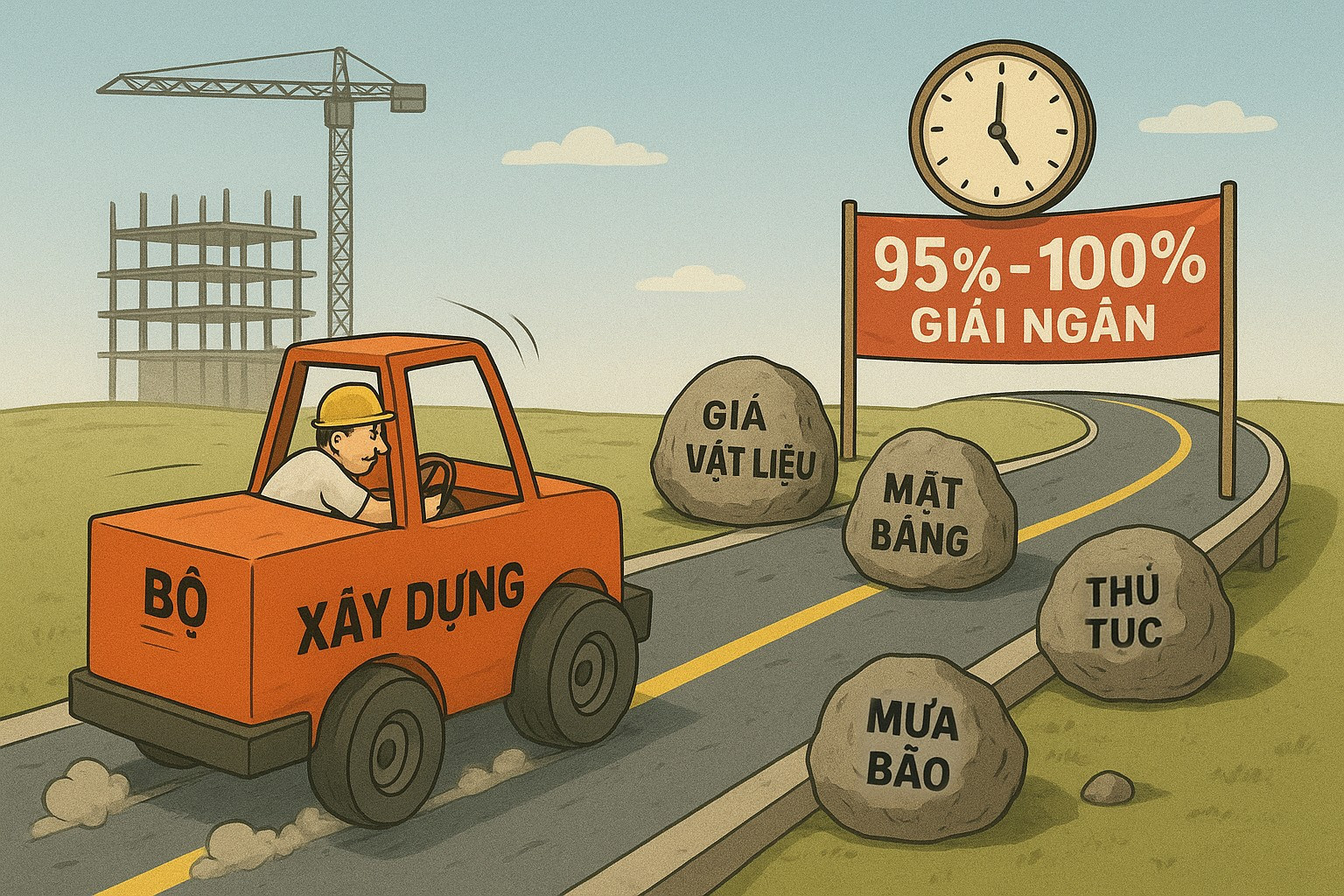
The economic expert expects that with this scenario, the Ministry of Construction will increase the average disbursement rate to nearly 10,000 - 11,000 billion VND/month in the last 4 months, reaching nearly 90-92% of the plan. This is a good level but has not reached the target of 95% (calculated based on the scale of the plan inferred from the data of July-August).
For the accelerated scenario (reaching 95%, approaching 100%), additional conditions are required to transfer capital round 2 in early November, update unit prices - standards in areas with strong fluctuations in sand, stone, and transportation to remove "fear of loss"; special working group with localities to clear land according to a rolling model, allow additional advance payment with guaranteed packages - contract performance guarantee, list of 300-500 "green" projects (smooth procedures, available materials) are prioritized quickly - settlement as soon as conditions are met.
If it sticks to the accelerated scenario, the Ministry of Construction can achieve a disbursement rate of 12,000 - 13,000 billion VND/month, exceeding 95% of the capital disbursement target, and at very favorable points it can approach 100%. However, the economic expert did not forget to warn that the main risks are weather and materials and if not controlled, the scenario will slide back to the base level.
"The Ministry of Construction's target of disbursement of at least 95% and striving for 100% is in line with its vision in the context that Vietnam needs to take advantage of the trio of "public investment - private investment - FDI" to neutralize external shocks and accelerate productivity. However, "bottlenecks" do not disappear over time; only a battle map at the project - bidding package level, enforcement discipline at the investor - management board level and transparent public finance can turn commitments into numbers on the balance sheet," said Mr. Ngo Tri Long.
Source: https://tienphong.vn/giai-ngan-dau-tu-cong-cu-nuoc-rut-tieu-tien-san-tren-ban-bo-xay-dung-post1778007.tpo



![[Photo] Solemn opening of the 8th Congress of the Central Public Security Party Committee, term 2025-2030](https://vphoto.vietnam.vn/thumb/1200x675/vietnam/resource/IMAGE/2025/10/4/f3b00fb779f44979809441a4dac5c7df)
![[Photo] Bustling Mid-Autumn Festival at the Museum of Ethnology](https://vphoto.vietnam.vn/thumb/1200x675/vietnam/resource/IMAGE/2025/10/4/da8d5927734d4ca58e3eced14bc435a3)
![[Photo] General Secretary To Lam attends the 8th Congress of the Central Public Security Party Committee](https://vphoto.vietnam.vn/thumb/1200x675/vietnam/resource/IMAGE/2025/10/4/79fadf490f674dc483794f2d955f6045)




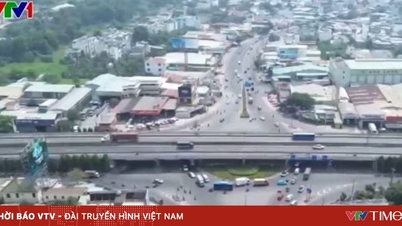



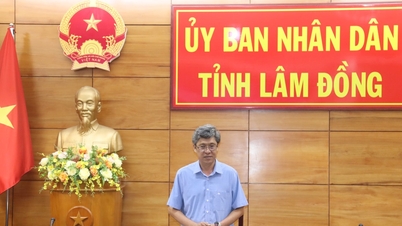

![[Photo] Binh Trieu 1 Bridge has been completed, raised by 1.1m, and will open to traffic at the end of November.](https://vphoto.vietnam.vn/thumb/402x226/vietnam/resource/IMAGE/2025/10/2/a6549e2a3b5848a1ba76a1ded6141fae)



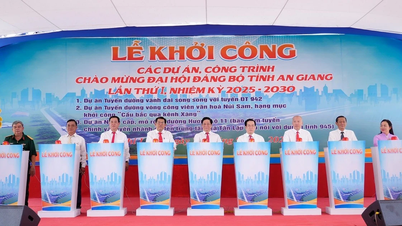









































![[VIDEO] Summary of Petrovietnam's 50th Anniversary Ceremony](https://vphoto.vietnam.vn/thumb/402x226/vietnam/resource/IMAGE/2025/10/4/abe133bdb8114793a16d4fe3e5bd0f12)

![[VIDEO] GENERAL SECRETARY TO LAM AWARDS PETROVIETNAM 8 GOLDEN WORDS: "PIONEER - EXCELLENT - SUSTAINABLE - GLOBAL"](https://vphoto.vietnam.vn/thumb/402x226/vietnam/resource/IMAGE/2025/7/23/c2fdb48863e846cfa9fb8e6ea9cf44e7)















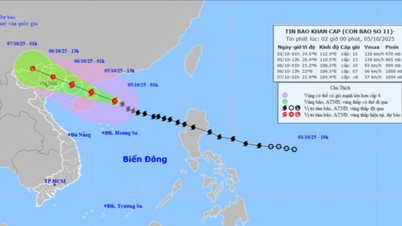







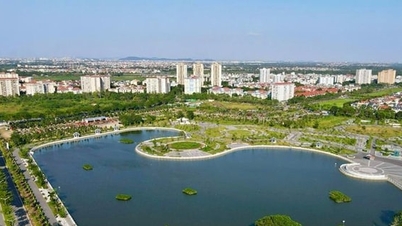









Comment (0)